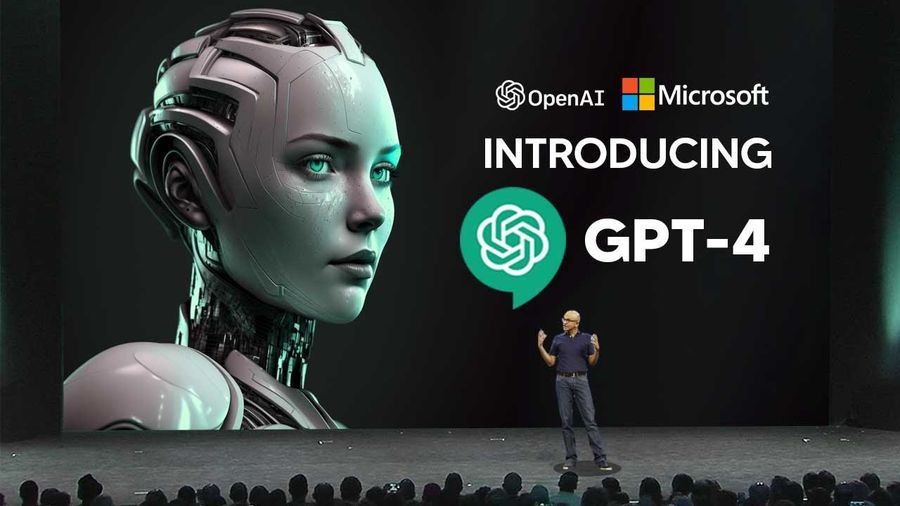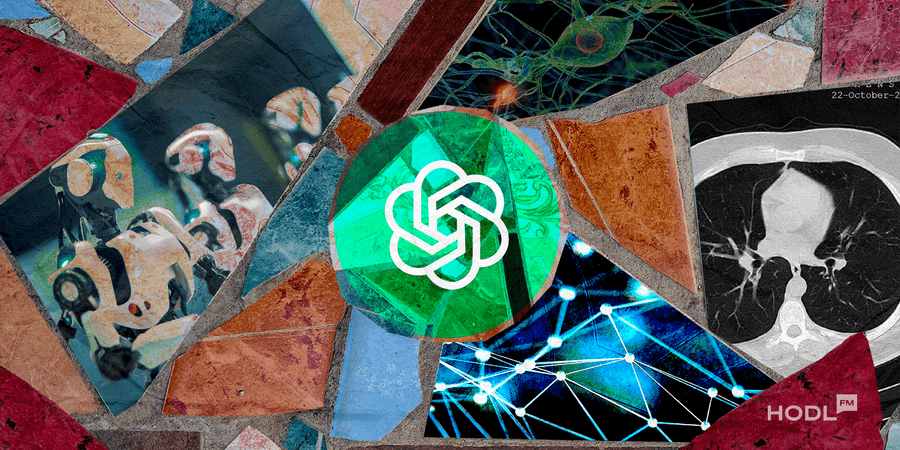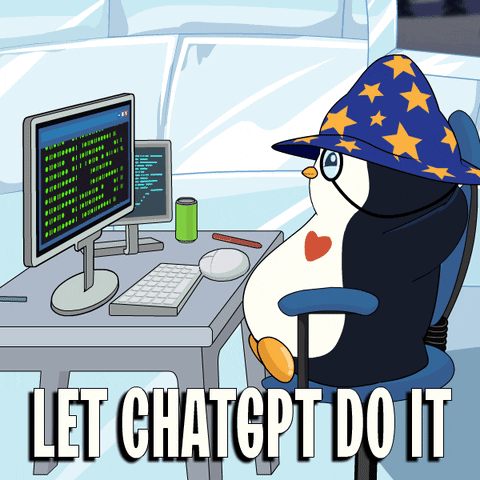Imagine having to make small talk with a random colleague of yours in the coffee machine queue at the office. There is a very high chance that the topic will shift to Artificial Intelligence during your five-minute-long exchange of words. It’s either AI or crypto nowadays, and rightly so because there are truly no boundaries of what AI can do.
Related: What is ChatGPT? The AI Language Processing Tool Explained
OpenAI, the leading research organization in the field is taking things above and beyond and is creating artificial general intelligence (AGI) that comes with the potential to change the world and benefit all of humanity.

Launched in 2015, the nonprofit research center OpenAI is quite serious about its mission to transform artificial intelligence into a globally accessible resource.
Safely aligning powerful AI systems is one of the most important unsolved problems for our mission. Techniques like learning from human feedback are helping us get closer, and we are actively researching new techniques to help us fill the gaps.
Josh Achiam, Researcher at OpenAI
Anyways, let’s delve into OpenAI’s wide range of projects and explore their implications across various domains. We will not stop there and take a look at their impact on AI research, real-world applications, collaborative efforts, and the future outlook of AI.
Project Highlights
As if ChatGPT wasn’t enough, OpenAI’s suite of projects comes as a whole package with a commitment to innovation and further AI research.
GPT-4
Representing the most successful initiative in the Generative Pre-trained Language Models, GPT-4 has dramatically changed the field of natural language processing. GPT-4 offers nuanced, contextually relevant text generation, capable of understanding and replicating human-like text with incredible accuracy. The real-world applications range from writing assistance to complex data analysis.

DALL·E 3
This generative AI model is capable of creating highly realistic images and art from simple textual descriptions, showcasing OpenAI’s strides in visual AI. DALL·E 3’s ability to interpret and visualize creative concepts from text inputs highlights the merging paths of AI and human creativity, opening new avenues for artists, designers, and content creators.
Sora
Known as OpenAI’s take on AI-driven video creation, Sora showcases the capabilities of AI when it comes to generating videos based on user prompts. It can be even said that te competitors on the market are nowhere near Sora’s talent in creating realistic (or surrealistic depending on user choice) videos. By enabling users to generate videos from textual descriptions, Sora will soon start to revolutionize content creation, storytelling, and information dissemination alongside making video production more accessible and creative.
API
API on the other hand, stands as a cornerstone of OpenAI’s mission to make AI technology available for all. API allows developers to seamlessly integrate OpenAI’s various models, such as GPT, DALL·E, and more, into their own applications. This is a crucial tool that can make AI, in general, more integrated into our everyday lives.
For a deeper exploration into these projects, their impact, and potential applications, OpenAI’s official website offers extensive information and updates. Visit OpenAI Projects for more detailed insights.
Impact on AI Research
Naturally, all these endeavors position OpenAI as a big contributor that has been crucial in leading AI research. Their work has influenced almost all AI disciplines, from machine learning algorithms to ethical AI development. This emphasis on safety and scalability in AI research is encouraging a global dialogue on responsible AI practices, ensuring that advancements in the field are aligned with human values and ethics.
To be honest, as AI comes closer to perfectly mimicking human images and voices, the danger of a video of your face and your voice saying very bad things go viral is not a joke. But OpenAI is taking a holistic approach to AI research that takes this danger into consideration as well.
Okay, so what about AI taking our jobs worries? Well, nobody knows what will happen on that front until AI gets developed enough to replace humans in jobs. For now, AI is mostly considered a helper instead of a job stealer. But there is no denying that this is a big worry that awaits concrete solutions.
Applications in Real-World Scenarios
The practical applications of OpenAI’s technologies are incredibly vast, spanning various industries and also enhancing the average Joe’s everyday life. Oh boy, where to begin!
Healthcare: OpenAI’s models can be leveraged for early disease detection and personalized medicine. By analyzing vast datasets, such AI systems can identify patterns and anomalies that may overlooked by human experts and therefore facilitate earlier interventions and better treatment strategies.
Finance: In the financial sector, OpenAI’s technology enhances risk assessment and fraud detection systems. For example, GPT models can analyze financial transactions at scale to detect potentially fraudulent activities and ensure greater security and operational efficiency.
Autonomous Vehicles: Fostered by OpenAI’s research, the decision-making of AI systems continuously improves and contributes to the development of safer autonomous vehicles. By processing real-time data from various sensors, OpenAI’s models can make split-second decisions that mimic human judgment, potentially reducing accidents and improving road safety.
Entertainment and Gaming: OpenAI’s DALL·E and GPT models offer revolutionary applications in content creation. They can generate unique artwork, create game narratives and dialogues, or even be integrated into NPCs for life-like dialogs within games.
Content Creation: Beyond gaming and entertainment, OpenAI’s technologies like DALL·E for visual content and GPT for text generation are empowering writers, marketers, and content creators. They can generate original content, ideate marketing campaigns, or even produce educational materials.
Basically, any industry can utilize OpenAI models to improve its services. It’s up to the vision of the decision-makers of each industry.
Collaborations and Partnerships
OpenAI’ seems committed to forming collaborations in its mission to democratize AI benefits. By partnering with academic institutions, industry leaders, and government bodies, OpenAI is leveraging collective expertise to tackle some of the most pressing challenges in AI research and development.
OpenAI’s collaborations span various sectors:
- With Microsoft, OpenAI has extended a partnership focusing on cloud infrastructure for AI research.
- Bain & Company alliance brings AI technologies to enterprise clients.
- Axel Springer’s partnership utilizes AI in journalism, integrating AI technologies to enrich user experiences and content quality.
- Opera collaborates with OpenAI to integrate AI into its browser products, redefining the browsing experience with AI-backed features.
The list goes on and on, but we don’t have enough space to list them all.
Future Outlook
Looking ahead, the future of AI as shaped by OpenAI’s endeavors is both promising and challenging. On the bright side, the potential of OpenAI’s models to address complex global issues, enhance human capabilities, and transform industries grows. But, this future also demands a solid effort to address ethical considerations and convince the world that AI will be a tool serving the good, not the bad.
Through research, innovative projects, and collaborative efforts, OpenAI seems like our best bet toward a future where AI enhances human potential and addresses global challenges.
More Info:
- AI Chatbots Revolt Against Upcoming US Elections
- Where Crypto Can Grow – Digital Asset Regulations Around the World
- Exploring the Boundaries: 3D Adult Content vs. Apple Vision Pro
It’s a good idea to not miss out on this fast-evolving technology. When OpenAI models become globally adopted, you don’t want to end up like your grandfather who can’t connect to Wifi on his phone or can send a couple thousand dollars without hesitation to the fallen prince of Nigeria, who contacted him via email in an innocent effort to move his billion-dollar fortune out of the country and is nice enough to share half of it with the person who helps him. Stay safe and informed!
Disclaimer: All materials on this site are for informational purposes only. None of the material should be interpreted as investment advice. Please note that despite the nature of much of the material created and hosted on this website, HODL FM is not a financial reference resource and the opinions of authors and other contributors are their own and should not be taken as financial advice. If you require advice of this sort, HODL FM strongly recommends contacting a qualified industry professional.







